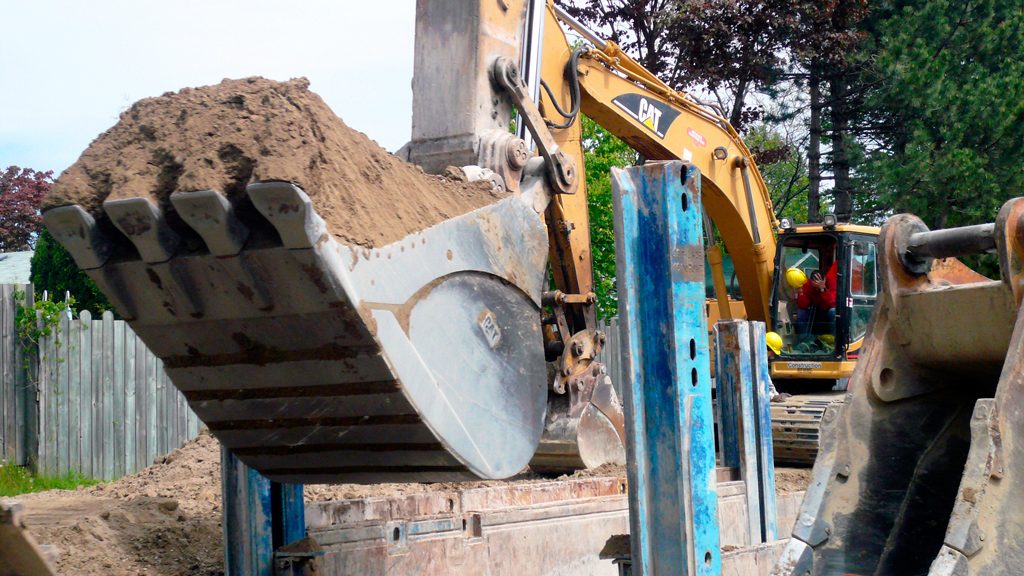The Ministry of the Environment and Climate Change (MOECC) has released potential changes to the proposed Excess Soil Reuse Regulatory Package, with the most significant being the transition period.
This comes after stakeholders across all sectors recommended a longer transition period than the initial proposed implementation date of Jan. 1, 2018.
Sanjay Coelho, a senior policy analyst with the MOECC, was at the Excess Soils Symposium hosted by the Canadian Urban Institute on Dec. 6 in Caledon, Ont. with a presentation titled Delivering Ontario’s Excess Soil Management Policy Framework. He told a packed house that in April 2017, the ministry released a regulatory proposal on the Environmental Registry for a 60-day comment period with a new proposed Excess Soil Reuse Regulation, amendments to existing regulations, new proposed standards and sampling guidance. The ministry received 110 comments on the proposal and held about 35 meetings on the matter.
“Hopefully you will see that we have been listening and learning,” said Coelho, adding the feedback will help inform a new proposed regulation under the Environmental Protection Act.
If the proposal is finalized, the amendments could come into effect when the regulation is filed or shortly thereafter.
Excess soil should be seen as a resource rather than a waste to the fullest extent possible,
— Sanjay Coelho
Ministry of the Environment and Climate Change
“Modernization of brownfields amendments could come into effect immediately upon filing. Reuse standards, clarifying waste designation and approvals would come into effect Jan 1, 2020 and the Excess Soil Management Plan (ESMP) and registry requirements will come into effect Jan 1, 2021,” Coelho explained.
Andy Manahan, executive director of the Residential and Civil Construction Alliance of Ontario and a member of the Excess Soil Engagement Group (ESEG), said he was pleased to hear about the changes, particularly regarding the transition period.
“There was a lot of concern that the Jan. 1 deadline was unrealistic because no one was going to be prepared for it so there was certainly a sense of relief that they had heard that message and that there was going to be a phase in period and some of the wording and regulations had changed,” said Manahan.
It is important to be clear that excess soil reused in a project area is not waste, Coelho noted in his presentation. Rebranding “receiving sites” as “reuse sites” will ease the waste stigma.
“Wherever possible, we really want to focus on that side of the equation that is reuse so it’s not all about waste,” he noted, adding a few other name changes are under consideration for the same reason, including calling excess soil processing sites and excess soil banks excess soil recyclers. “It’s meant to convey the idea that excess soil should be seen as a resource rather than a waste to the fullest extent possible.”
Manahan said the ESEG members told the MOECC that the regulatory package document they saw earlier in the spring was very complicated because it cross-referenced many other statutes.
“There is going to be an effort to create what they call a plain language regulation,” said Manahan. “For communication purposes we’ve said even if it’s 40 pages, that’s too long for the typical contractor to wrap their head around, they don’t have time for that kind of stuff. Maybe their lawyers would but…you want to create a system that is going to be practical and cost effective.”
The original proposal, Coelho explained, states excess soil haulers would require approval unless going to a receiving site or temporary excess soil storage site. The changes propose to allow haulers of dry excess soil to haul without an approval in certain circumstances.
“If it’s going to a facility like a soil bank or soil processor or landfill approved under Part 5 then it would require an approved hauler, we are proposing to take that away,” Coelho said.
Under the new regulation, an ESMP would be required to be prepared for specific projects. There would be two key triggers for a source site owner to be required to prepare a plan for a project: a quantitative trigger if a certain quantity of excess soil is to be moved off site and a qualitative trigger if excess soil is coming from an area with current or known past potentially contaminating activity.
The quantity threshold in the plan is proposed to change from 1,000 cubic metres to 2,000 cubic metres.
“Increasing the quantitative trigger will allow excess soil management plans to be required for developments such as condominiums, subdivisions and larger commercial and industrial infrastructure,” Coelho stated.
Changes are also proposed for receiving site oversight.
“We are considering requiring larger receiving sites (10,000 cubic metres or greater) to register or compile records — volume, applicable quality, source sites — and to require qualified person oversight for them,” said Coelho. “Up until this point, you have probably seen a number of ways that perhaps were tailoring with the ESMP to the source sites but we’ve also heard about a potentially greater need for receiving site requirements so we are looking into that.”
The next key step is to finalize the excess soil regulatory package.











Recent Comments
comments for this post are closed